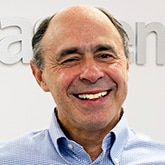Last weekend at the 23rd Indian Refining and Petrochemical Meet in Mumbai, several examples of digital transformation success were on display. Complementing these real-world achievements, a few different strategic approaches to digital transformation were described by both Indian refining operators as well as technology providers.
I’d like to profile three interesting presentations given by BPCL’s Mumbai refinery, describing both their digital transformation strategy as well as the measurable value of implementing digital twin and optimization solutions.
The “digital twin” concept is maybe overhyped and overused, but in this case BPCL has achieved two separate implementations, offering strong proof of value.
Real Applications: Sulfur Recovery and Online Models
Sulfur recovery is an important refining challenge is several respects. First, with the IMO 2020 marine diesel regulations (requiring marine shippers to move to much-lower-sulfur diesel fuels) there is a renewed sense of economic urgency in optimizing removal of sulfur in the refining process. There are multiple strategies in play, but one, certainly, is more complete removal of sulfur when possible.
Additionally, the sulfur recovery process involves considerable energy intensity, and therefore operating those processes most effectively has the side environmental and economic benefit of energy efficiency. Finally, there is the imperative to minimize SOX emissions and maximize sulfur recovery.
BPCL devised a strategy of implementing adaptive process control (namely the Aspen DMC3™ multivariate control technology) on their sulfur units, combined and driven by a predictive rigorous model of the sulfur process deployed online (namely the SULSIM technology within Aspen HYSYS®).
Aswari Kelkar presented several important conceptual elements of this digital solution, which together constitute its success. The first is the driving of the predictive model from sulfur unit plant data streams, deployed online. This turns the predictive model into an as-operating digital twin that can provide real-time advice and analysis to operations.
The second is the integration of this predictive model with the advanced control model within one easy-to-use and actionable dashboard, so that the operators can easily interpret information coming from complex systems. And the third is the open-loop integration of the two, such that the rigorous model drives the advanced control system to achieve more aggressive operation targets.
As demonstrated by the resulting operational data, this system has immediately had impact on:
-
Reduced SOX emissions
-
Increased sulfur recovery (which has economic value)
-
Energy efficiency
This implementation is an exciting demonstration of the far-reaching value that is beginning to be realized from the enabling technology components that AspenTech has been aggressively developing and bringing into the market. The solution was put together with BPCL Mumbai, together with the domain experts, Helium Consulting.
Another digital twin implementation on show from BPCL at this gathering was a rigorous model, again for the Mumbai refinery, that models a network of over 25 heat exchangers critical in driving crude units and reactors and runs them, online, based on streams of plant data. This allows it to continuously mirror operating conditions in the refinery and calculate fouling of both the radiation and convection sections of the heat exchangers.
The innovation is the online application, both of the rigorous heat exchanger models themselves (Aspen EDR) and also the integration with the refinery model (Aspen HYSYS), to calculate fouling based on process performance and provide predictive information on the impact on throughput. Again, this digital twin implementation is providing BPCL with measurable dollar benefits in terms of reduced operating costs, energy efficiency, reduced frequency of heat exchanger cleaning and increased throughput.
The Vision for Digital Transformation
This was all tied together for me in a third presentation given by BPCL’s Priya Bhagwat, which outlined their Mumbai refinery organization’s overall digital transformation strategy (driven by their refinery executive director, C. J. Iyer). Interestingly, Ms. Bhagwat conveyed to the rapt audience that “digital transformation” is not an application, but is rather the embedding of digital in everything that the refinery does.
She also promoted the idea that digital transformation projects need to relate closely to areas of economic benefit (a notion that both of these described examples are good proof points for). And she noted that the fundamental goal of digital transformation is about empowering the people to do better work. These are all strong concepts that the BPCL team is a great advertisement for.
This was made concrete by the several awards that the BPCL Mumbai refinery took away from the event, including one for best “smart plant” implementation.
And part of what made this so exciting to me was seeing the active role that AspenTech’s end-to-end refining solutions are playing in these and other BPCL projects. The BPCL people have used their drive, creativity and organization to make these technologies work in a real way to improve their refinery economics and operations.
To learn more about some of these concepts, you can also read my white paper on digital transformation for refining.



Leave A Comment